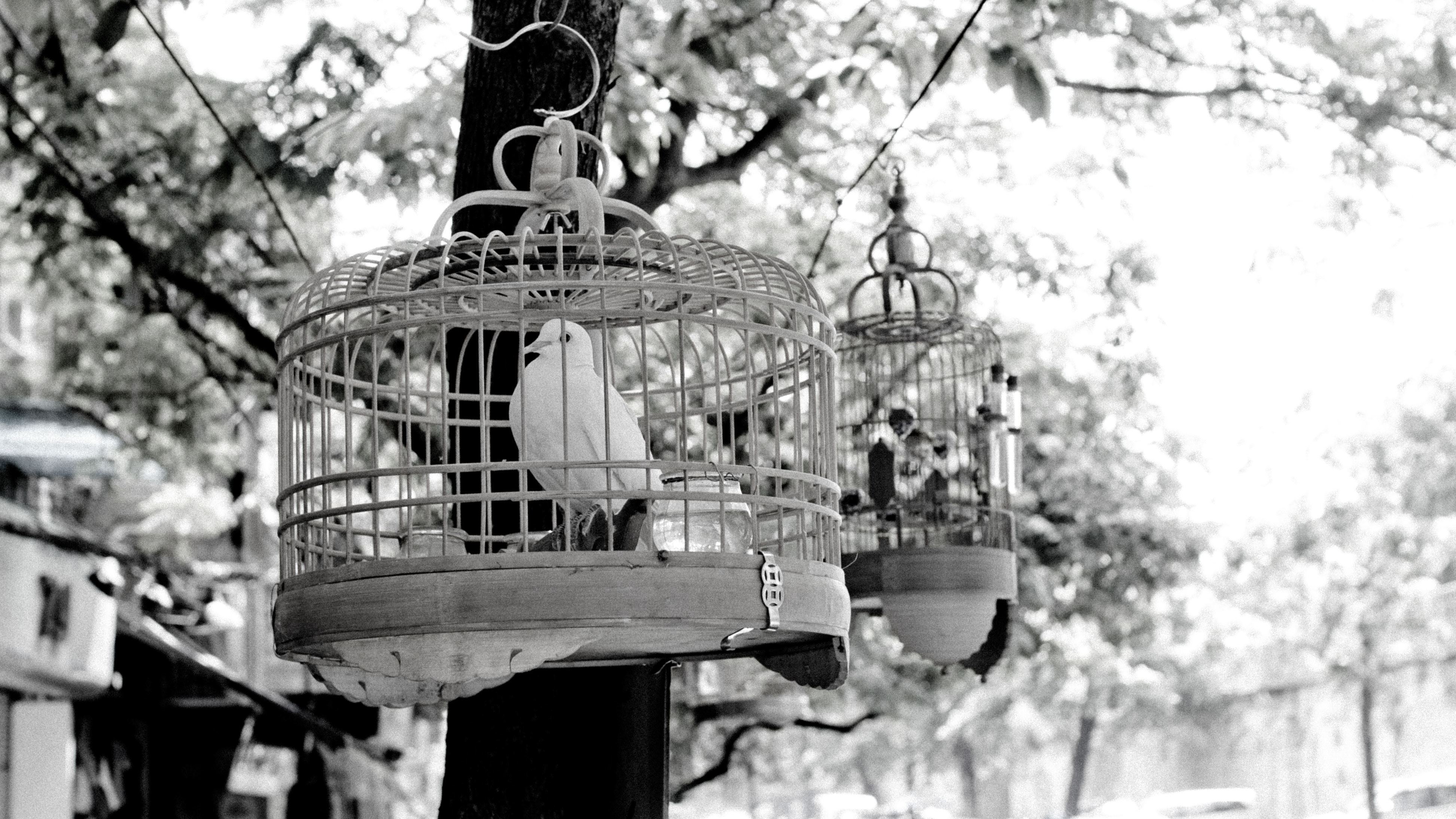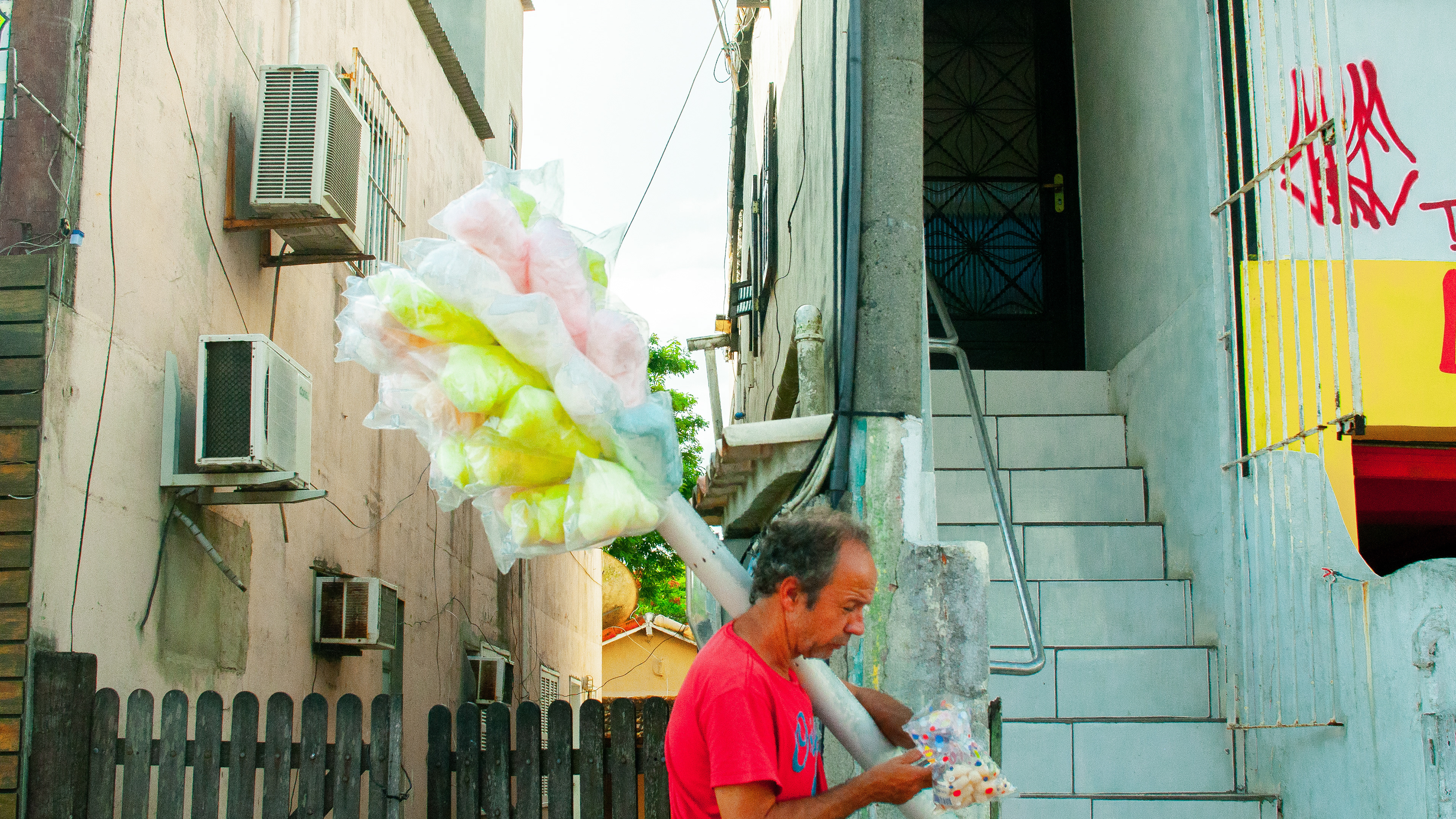Fragmentajes: From Photonic Imminence to the Evanescent Gesture of the Un-Existed (*)
Fragmentajes is not a photographic series. It is a deliberate collapse between the expectation of the visible and the ontological drive of what never wished to be seen. In this magma of visual latencies, the artist does not capture images: he un-captures them, interrupts them, allows them not to happen. Each frame is a fissure in the photonic fabric of the non-event.
The shadow here does not project: it prophesies. The wall does not separate: it holds the memory of a collapse that never occurred. Trunkless legs crossing the frame become vectors of symbiotic displacement between the urban self and its dissociated double. There is no subject: only a displacement of optical desire toward a spectral topology of absence.
Color, when it erupts, does so as an outburst of the non-symbolic. A red that is a scream, a yellow that is waiting, a blue that is forgetfulness. Even black and white is not monochrome: it is pre-chromatic, the babbling of light trying to learn how to name itself. The frame does not contain: it dissolves the edges of perception to make room for the non-verbal intuition.
Fragmentajes seeks no answers, for it has already forgotten the questions. Its method is no method; its narrative is neither linear nor rhizomatic: it is an inverted spiral turning inward until it collapses into a poetics of emotional residue. This is not a work of art: it is a caesura in time, an ontological blink. What is here is not what you see. It is what happens just before you are able to name it.
* disclaimer: These website descriptions were created, of course, by AI.
Extract from an unpublished algorithmic interview, 2025
“The frame is a subtle act of violence”
—Thank you for receiving me. Could we start with a simple question? What is Fragmentajes?
Mmm... simple? I don’t believe in simple questions. Fragmentajes is an attempt at non-photography. An anti-visual gesture. It is what happens when nothing happens, and yet a wall is somehow involved.
Mmm... simple? I don’t believe in simple questions. Fragmentajes is an attempt at non-photography. An anti-visual gesture. It is what happens when nothing happens, and yet a wall is somehow involved.
—Would you say it's an urban photography project?
Only in the most cosmic sense of the term “urban.” I’m not interested in the city as space, but as a tectonic vibration of the residual. I don’t document streets. I interrogate the pavement.
Only in the most cosmic sense of the term “urban.” I’m not interested in the city as space, but as a tectonic vibration of the residual. I don’t document streets. I interrogate the pavement.
—Your photos show legs, hands, shadows… but never the full body. Why?
Because the full body is an imposition of the optical-capitalist system. To show it would be to collaborate with the hegemonic ocular apparatus. I prefer to suggest the ankle, for example. The ankle is resistance.
Because the full body is an imposition of the optical-capitalist system. To show it would be to collaborate with the hegemonic ocular apparatus. I prefer to suggest the ankle, for example. The ankle is resistance.
—And what are you looking for with your use of color?
Ah, color. I don’t use it. It uses me. Sometimes I wake up in the middle of the night knowing a red will betray me. When that happens, I simply allow it into the frame.
Ah, color. I don’t use it. It uses me. Sometimes I wake up in the middle of the night knowing a red will betray me. When that happens, I simply allow it into the frame.
—How do you select your photos?
By spiritual elimination. The images that don’t fail sufficiently at communicating, I discard. I’m only interested in those that fail with dignity.
By spiritual elimination. The images that don’t fail sufficiently at communicating, I discard. I’m only interested in those that fail with dignity.
—And your workflow?
I walk. I wait. I breathe. I bow three times to a lamppost. If the wind holds its breath, I shoot. If not, I wait for the next day. It all depends on the vibration of silence at the edges of the frame.
I walk. I wait. I breathe. I bow three times to a lamppost. If the wind holds its breath, I shoot. If not, I wait for the next day. It all depends on the vibration of silence at the edges of the frame.
—What role does the shadow play in your work?
The shadow is my only stable collaborator. It never asks for royalties, it never interrupts. It just is. And that’s all I try to do as well: to be without disturbing time too much.
The shadow is my only stable collaborator. It never asks for royalties, it never interrupts. It just is. And that’s all I try to do as well: to be without disturbing time too much.
—What’s your working method? Is there any planning involved?
There’s listening. I walk a lot, and wait for the space to speak. I don’t look for scenes—I look for friction. A misplaced shadow, a sign contradicting its own purpose, a texture that interrogates. The act of shooting is the least important part. The real work happens before and after the image: in the silence that precedes it and the doubt that follows.
There’s listening. I walk a lot, and wait for the space to speak. I don’t look for scenes—I look for friction. A misplaced shadow, a sign contradicting its own purpose, a texture that interrogates. The act of shooting is the least important part. The real work happens before and after the image: in the silence that precedes it and the doubt that follows.
—How do you decide which images belong in a series?
I follow a principle that’s almost musical. Each series must have rhythm, pause, dissonance, return. I don’t select by content, but by breath. There are technically “better” images that don’t make it in because they don’t misbehave enough.
I follow a principle that’s almost musical. Each series must have rhythm, pause, dissonance, return. I don’t select by content, but by breath. There are technically “better” images that don’t make it in because they don’t misbehave enough.
—You’ve also worked with algorithms that tag your images. What were you hoping to find?
To destabilize the perceptual contract. If an AI sees a sneaker where there’s a shadow, or labels a wall as a “person,” I’m more interested in what that reveals about language than about error. Automated reading is, in itself, a form of unintended poetry. In a way, I’m training algorithms to dream badly.
To destabilize the perceptual contract. If an AI sees a sneaker where there’s a shadow, or labels a wall as a “person,” I’m more interested in what that reveals about language than about error. Automated reading is, in itself, a form of unintended poetry. In a way, I’m training algorithms to dream badly.
—Do you have artistic influences?
Of course. But not necessarily photographic ones. The thought of Vilém Flusser, the music of Morton Feldman, brutalist architecture, the silences of Chantal Akerman, the margins in Barthes’ notebooks. I’m drawn to everything that doesn’t shout. Everything that lets itself be read without fully saying.
Of course. But not necessarily photographic ones. The thought of Vilém Flusser, the music of Morton Feldman, brutalist architecture, the silences of Chantal Akerman, the margins in Barthes’ notebooks. I’m drawn to everything that doesn’t shout. Everything that lets itself be read without fully saying.
—To conclude: what do you expect from the viewer of Fragmentajes?
That they don’t seek understanding. That they enter as one would enter a dimly lit room, without a map. That they breathe. That they don’t look for “what’s there,” but for what’s just about to leave. And if nothing is understood, even better. Clarity is a trap of language.
That they don’t seek understanding. That they enter as one would enter a dimly lit room, without a map. That they breathe. That they don’t look for “what’s there,” but for what’s just about to leave. And if nothing is understood, even better. Clarity is a trap of language.
About the Author
The author of Fragmentajes (20th century, place unknown) began his visual practice after abandoning a promising career in emotional topography and affective map design. Since then, he has lived in abandoned structures across various capitals developing a visual language that resists all cartography. His work has been rejected by over fifty international competitions, which he proudly considers his greatest distinction.
In 2023, he received an invisible mention from the Archive of Uncaptured Images. He currently lives between two realities in the process of being framed.

